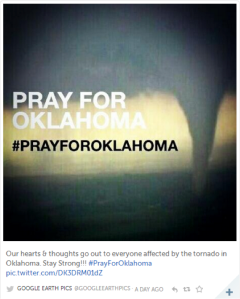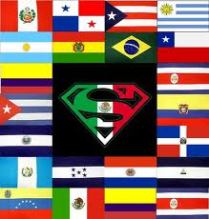 If you haven’t already heard, Monday’s tragic tornado in Oklahoma killed at least 24 people. By Tuesday morning #PrayForOklahoma was trending and people all over the country were sending their condolences.
If you haven’t already heard, Monday’s tragic tornado in Oklahoma killed at least 24 people. By Tuesday morning #PrayForOklahoma was trending and people all over the country were sending their condolences.
Interesting, isn’t it? Tragedies tend to bring people together and social media seems to be the driver. So, what does this mean for brands?
1) Say it first – Brands need to remain relevant. Consumers are bombarded with messages more than ever before and marketers need to find a way to beat the clutter. Once a topic has run its course it becomes obsolete. In other words, you do not want to be the brand that tweets about the Oklahoma tornado once everyone is fully aware of the details. If you remain consistent and relevant you will build credibility with your audience and they will, ultimately, confide in you. This may not produce a hike in sales today but it will help build brand equity in the long-run.
2) Humanize yourself – To humanize your brand is to make it authentic. As marketers, we need to embrace the human side of communication. It is in our nature to connect with others, usually based on common interests. If consumers see you as a “friend” they will be more likely to become brand loyal. You can’t become someone’s friend by merely talking about yourself or the products you offer. You become someone’s friend by relating to their interests and being genuine about it. For the past few days, people have been absorbed in the Oklahoma tornado and brands – the smart ones – have joined the cause.
At the end of the day, people connect with what is real, and social media allows marketers to connect easier and more frequently than ever before! All we have to do, as marketers, is embrace our brand personality and remain relevant. Easy, peasy.
On another note – our condolences to those affected by the Oklahoma tornado.










